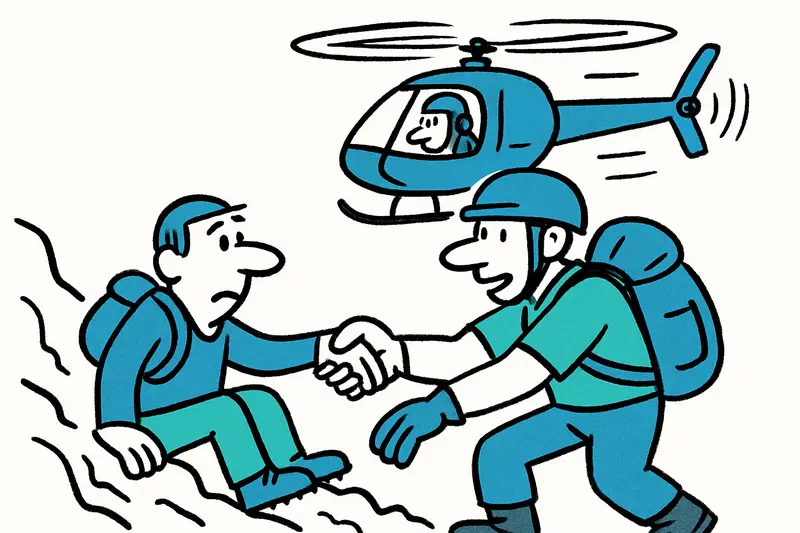Within a day, Mallorca's mountain rescue teams were dispatched four times—from Capdepera to Mortitx. A helicopter was also deployed.
Four missions, one island: mountain rescue on a busy day
It was one of those days when the radios hardly rested. Within a few hours, the island's mountain rescue teams were called to four separate emergencies – Capdepera, Andratx, Mortitx, and Torrent de Coanegra were on the agenda. Anyone out and about has probably seen the response vehicles: blue lights, muddy boots, and people breathing a sigh of relief when help arrived.
Helicopter operation in Torrent de Coanegra
The most dramatic moment unfolded in the Torrent de Coanegra. Around 4 p.m., hikers reported two injured people in a narrow gorge. The weather was changeable – light drizzle, slippery rocks. A helicopter was requested, flew in, and was positioned for the rescue. However it quickly became clear: a rope winch extraction was not possible there, too tight and too steep the place. So the rescuers decided pragmatically and patiently: two helpers secured the injured, and together they carried them out on foot from the gorge – a bit like a slow, orderly exchange between courage and routine.
Other missions: Capdepera, Andratx, and Mortitx
In Capdepera, mountain rescue helped an older hiker who had sprained his ankle. In Andratx, teams moved onto steeper coastal paths where a tourist had slipped. And in Mortitx, a terrain known to locals for its rugged paths, a person with circulatory problems had to be tended to and brought down to the valley. In all four operations, firefighters, emergency medical services, and partially the Guardia Civil coordinated together.
What sticks with you? Days like these show how important local knowledge is: where the helicopter can't help, experience and shoes with tread are required. Many of the rescued were day-trippers who had underestimated the route; others were locals who slipped at an unfortunate spot. The teams emphasized in the evening that good preparation – proper footwear, water, some provisions, and a decent map or offline navigation – often makes the biggest difference.
If you are in the mountains: inform someone of your route, don't let your phone battery run down, and be mindful of the trails. The emergency services do their best, but some things can be avoided.
I later stood in a parking bay near the Torrent entrance, watched the response vehicles drive away, and thought: lucky me. The rescuers were tired, but satisfied. And the hiking boots? They'll probably need cleaning again tomorrow.
Similar News

Severe Weather in Mallorca: Ongoing Delays at Palma Airport Cause Frustration
Due to heavy rain and thunderstorms, there are still significant delays at Palma Airport. Travelers from Germany should ...

Northern Lights over Mallorca: When and Where You Can See the Aurora Borealis
Between October 20 and 29, the Northern Lights could be visible over Mallorca. Who wouldn’t want to go to Scandinavia? A...

Costitx: Flowers, Stones, and a Look at the Starry Sky
Small village, big personality: Costitx blends blooming streets, ancient excavations, and an observatory - a day-trip ti...

Die Zeit auf Mallorca: Warum die Uhren hier anders ticken
Auf Mallorca läuft die Uhr offiziell anders als die Sonne — ein Erbe aus den 1940er-Jahren, das bis heute unseren Alltag...

Orange Weather Warning for Mallorca: Heavy Rain and Thunderstorms Set the Week
Aemet warns: Monday and Tuesday on Mallorca are under orange alert. Heavy rain, floods, and traffic disruptions are poss...
